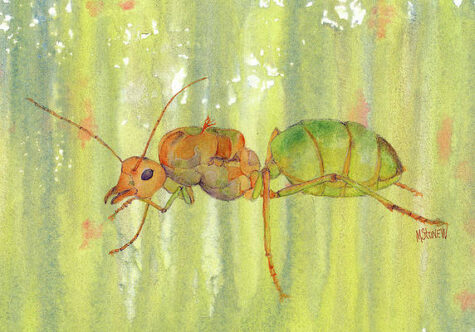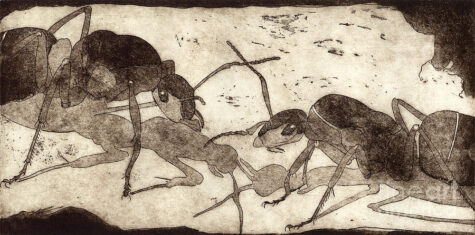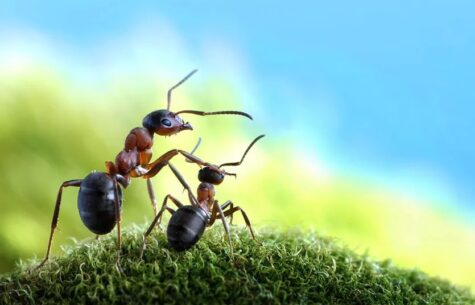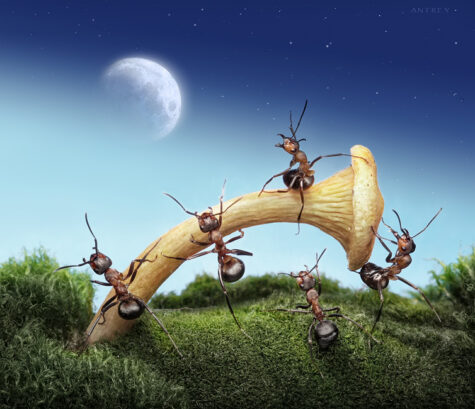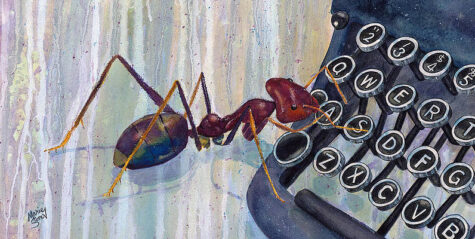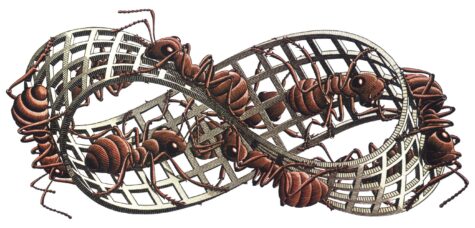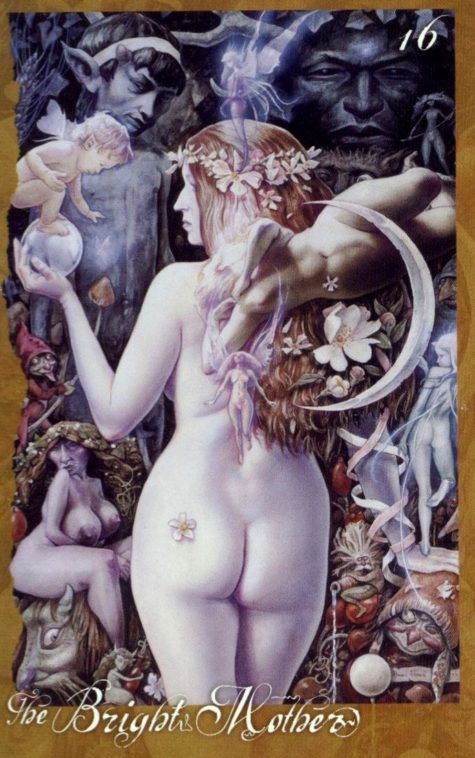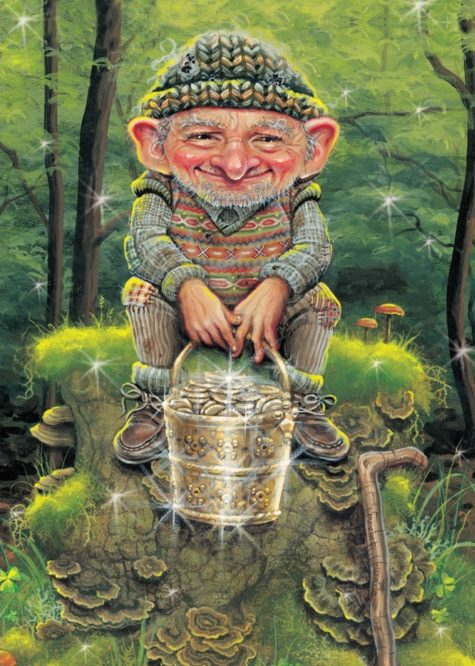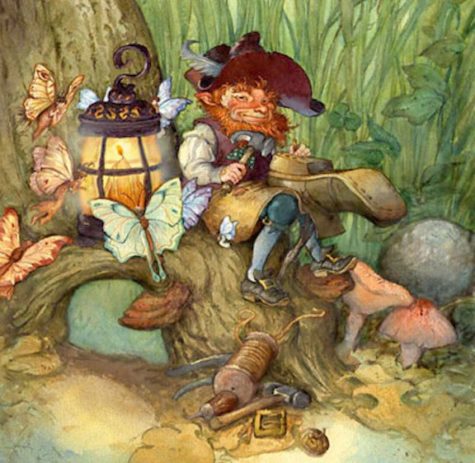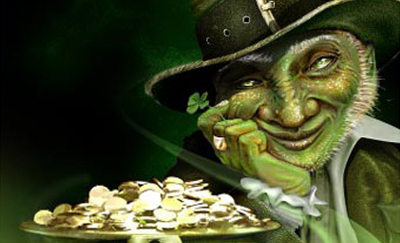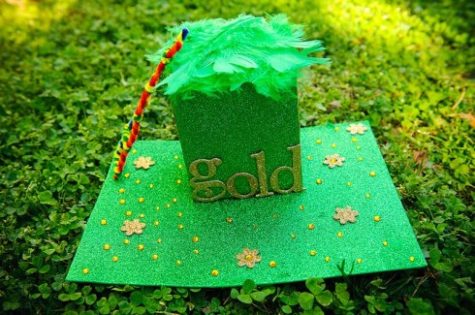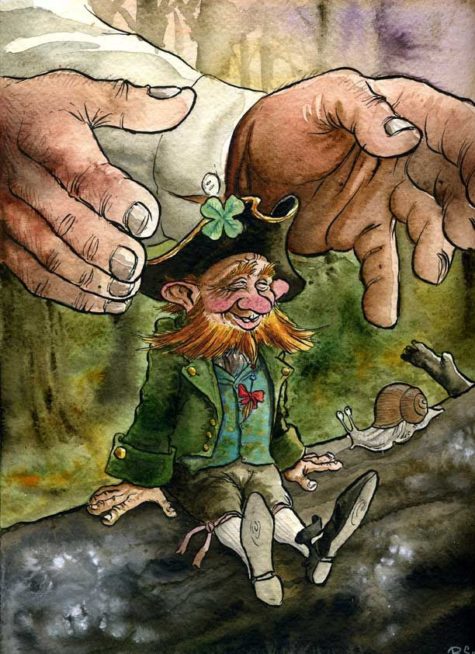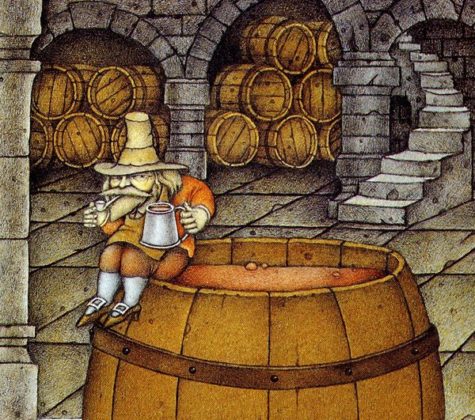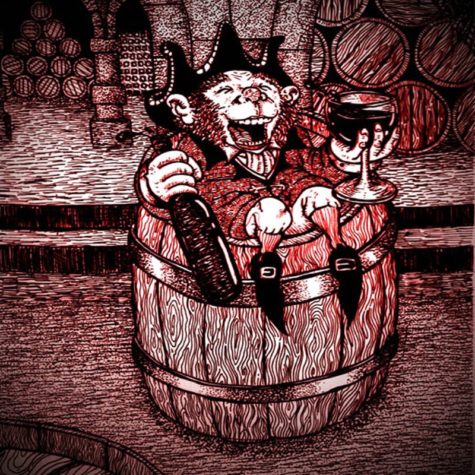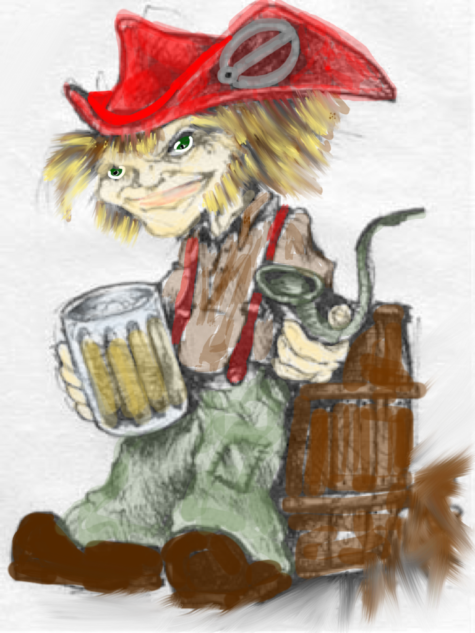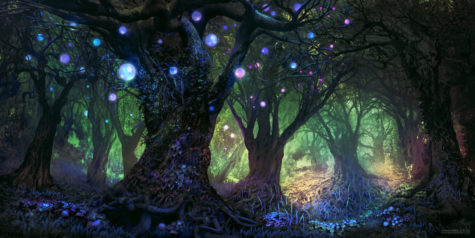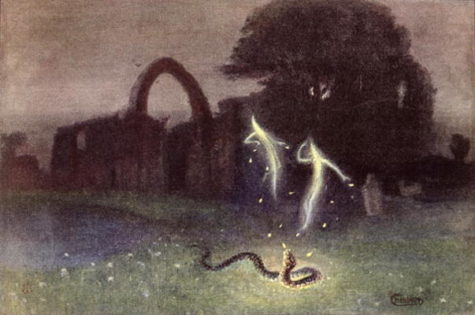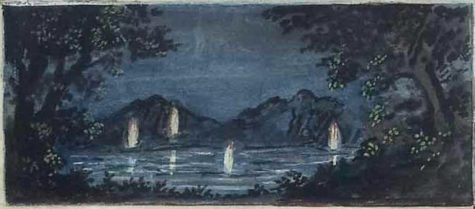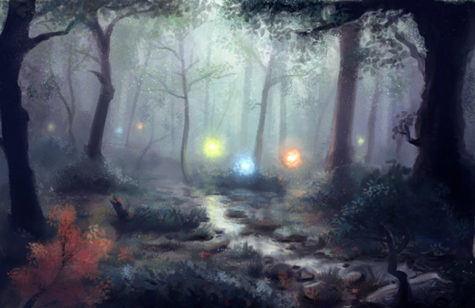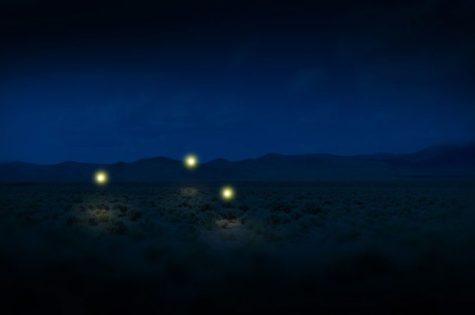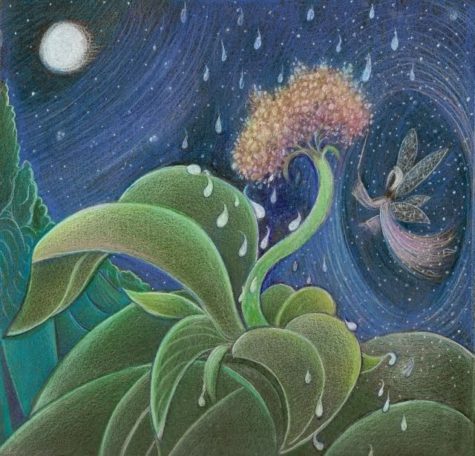Fairy
- Keynote: Industriousness, Order and Discipline
- Symbolism: Patience, Stamina, Planning, Energy, Communal Living, Storing for the Future, Group Minded, Perseverance, Step by Step, Teamwork, Industrial Creativity, Dynamism.
- Number: 12
The tiny ant is an example of determination and hard work. Despite its size, the ant is a constant reminder that nothing comes easy in life without diligence and willpower.
The skill and undaunted efforts of the ant community reflect much about what this totem can awaken. The ant is the teacher of how to build, how to become the architect of your own life. It can show you how to construct your dreams into a reality. It will show you that the greatest success occurs with persistence.
Because the ant queen normally lives for twelve years, those with ant totems may find that the cycle of industriousness and building of goals may increase over a period of twelve years. The cycle of twelve – days, months, years, will be of significance. For those who are into numerology this would be a beneficial number to study if the ant is your totem.
If the ant has shown up in your life, examine your own industriousness. Ask yourself the following questions:
- Are you disciplining yourself enough to accomplish the tasks at hand?
- Are you or those around you looking for the quick and easy way?
- Are you neglecting important activities?
- Are you laying a good foundation?
- Are you adding new structures (education, hobbies, jobs, etc.) to your life with each passing year?
- Are you being patient with your efforts?
- Are you being patient with yourself? With others?
- Are you making things treater and more difficult than they need to be?
The ant can teach you how to harness your own power to design and recreate your life and its circumstances from the ground up. Ant can show you how to best work with others for the good of everyone. Ant teaches us that regardless of circumstances, if the effort is true, the rewards will follow ~ in the most beneficial time and manner. Ant is the promise of success through effort.
Ant Power
Summon the ant power animal whenever you feel you are following the wrong path in your career. It will help you understand that you must work diligently and collaborate with your coworkers.
Ant medicine will help you overcome the challenges with patience and courage. Organization and discipline are also required to conquer the obstacles laid on your path. Ant medicine will help you focus on your tasks and understand what matters. Teamwork and unity are also important lessons taught by the ant power animal.
Finding black ants in the kitchen or seeing ants in the house should not worry you. It is a sign that your power animal answered your invocations.
The meaning of ants as power animals is linked to the idea of community and unity. The Ant power animal urges you to keep and consolidate the relationship with your loved ones.
Ant Medicine
Ant People are learning to trust Natural Law and that reward is just over the horizon. It’s similar to “can’t hurry Love” or “haste makes waste.” Patience is of the utmost importance right now so that you have more time and noticed opportunity to prepare for your ultimate success. Ant People are drawn to completing projects that benefit the community as a whole and they work in complete cooperation with those around them. Ant People typically have a lot of weight riding on their back.
When Ant Medicine grabs your attention it is asking you to cooperate with your tribe (co-workers, family, projects, etc.,) in unity and patience. Ants are resolute and unwearied little creatures. Although they are tiny, they are indeed mighty. They have a strong skeleton on the “outside” of their body (exoskeleton) with specialized muscles that give them their strength. Ants can carry 30 times their weight, which would be equal to a 150 lb. person carrying a bulldozer on their back at 19,500 lbs.
The typical way to stop ant medicine is to literally stomp on it or fumigate it. If an ant is stomped on, it will emit pheromones that will draw more ants to the area. In short, ant medicine is unstoppable, tireless, patient and unified.
Ant’s message is about working non-stop toward your goals and forging ahead for the Good of the whole. Are you working on a project that benefits a larger audience? Have you been ignoring your tribe? Ant medicine cooperates with the tribe in harmony and wisdom toward a common goal, knowing that patience will be rewarded. Have you been cooperating with yourself on your own personal projects?
Ant Myths and Lore
Despite its apparent insignificance, the ant was one of the teachers of the wisest of kings, Solomon, and is a sacred creature in Islam.
Given the habits of the ant, it is no surprise that this tiny creature is primarily a symbol of industry. Because it often carries seeds and grains, in Ancient Greece the ant was sacred to the Goddess of the Harvest, Demeter. However, the industry of the ant seems to be concerned with one thing, the storage of material goods. Therefore, despite all its hard work, the ant is a symbol of materialism to Buddhists.
The teamwork of ants is notorious and many tiny ants together can shift loads far heavier than they are. The ant is a good example of the “sum of the parts being greater than the whole,” and for Hindus this represents the idea of the Godhead.
In Cornwall, England, locally known as Meryons or Muryans, were once thought to be fairies in the last stages of their earthly existence. Legend said that these elfin creatures went through many gradual transformations, always becoming smaller and smaller, until finally, after living for some time as Meryons, they disappeared altogether from this world.
According to one tradition, the Cornish fairies were once Druids who refused to accept Christianity and so were condemned to lose their human status. Another tale says unbaptized children took this form after their death, being safe from Hell because of their innocence, but unable to enter Heaven because they were not christened. In both versions of the legend, they eventually became Muryans, and hence it was considered very unlucky to destroy an ants’ nest.
Old English folks associated the ants with the Underworld and death. Since the ants build complicated structures under the Earth’s surface, it is expected for their spiritual meaning to be linked to death.
Ant was also part of Greek mythology. The Greek word for ant is myrmekes, and it was believed that people Thessaly were descendants of ants. Another Greek myth speaks of Myrmex, an attic girl who was very dear to Athena, the goddess of wisdom. When the goddess invented the plough, Myrmex claimed she made the discovery. For this audacity, the goddess transformed the girl into an ant.
Because ants appear to be highly industrious and motivated, they have long been a symbol of work and industry. Partly this is due to the Greek tales of the ant, such as is found in Aesop’s Fables. Their wisdom and intellect in their endeavors is often acclaimed.
This diligent insect is an essential figure in Native American folklore and mythology. The Hopi people believe that the first world ended in fire. During this calamity, the Ant People saved the Hopi by taking them to underground caves.
People from northern California believed that ants could predict earthquakes, and it was forbidden to disturb their anthills. The Cherokee had an Ant Dance among their tribal traditions. According to a Salish legend, the Ant woman won the daytime from the Creator after defeating the Bear in a dance contest.
In South America these insects were often depicted as warriors due to the South American fire ants’ painful sting. Some of the initiation rituals included young people exposing themselves to ant bites.
Kuba people from Central Africa have a beautiful legend about the creation of the world and the white ants’ appearance. It is believed that Nyonye Ngana, son of the creator god Mbombo, created the white ants but died shortly after. The ants dug after black soil to bury him and thus transformed the Earth’s surface.
The Kabyl and Berber tribes from North Africa tell a story about the ant who taught the first humans how to use grains and plants. The first man and woman lived underground, and the ant showed them how to grow wheat and make bread.
The Maasai people appreciate ants due to their courage and healing powers. The powerful jaws of the driver ants are being used as stitches by the Maasai moran warriors.
Ant Dreams
According to many psychologists, dreaming of ants is related to the work ethic. Because ants are so industrious, it is considered bad luck to dream of them. This is a sign that you are overly concerned with prosperity and material possessions.
If you dream of ants on your clothing, or coming into your home, you will have petty annoyances. To watch ants is to indulge in activity; usually a lot of small jobs. An anthill in a dream is a sign of avoidance of work. Dreaming about ants crawling all over your body means that somebody is annoying you.
Dreams about ants flying, or an ant bite represent your need to free yourself from the daily routine. A dream about fire ants means that you have some regrets related to past actions or experiences.
When speaking of the dream interpretation, ants’ color is also an essential factor to take into consideration:
- Dreaming of red ants means that you might experience some difficulties or anger in your work relationships.
- The red ant dream meaning reflects some minor insecurities that make you feel uncomfortable.
- White ants in dreams symbolize hidden issues are happening right under your nose.
- Black ant’s dream meaning is related to minor displeasures that you deny or ignore.
Leaving aside the different interpretations, dreams about ants might be a sign that your spirit animal responded to your call. Perhaps you feel unimportant and neglected; therefore, the ant power animal comes to guide you through the obstacles.
Ant Superstitions
It was said at one time that if a piece of tin was put into an ant nest when the moon was new, it would turn into silver, provided that it was inserted at a certain fortunate moment which varied in different parts of the country.
- It is an indication of prosperity if ants build a nest close to your front door.
- It is considered a sign of bad weather when ants are noticeably busier than usual.
- An ant bite represents arguments and quarrels.
Black ants are considered quite auspicious. So if you see black ants roaming around your house then it means that soon there will be a sharp rise in your wealth. One the other hand, red ants are considered to bring bad luck. Red ants in the house means loss of wealth.
Although black ants are considered auspicious and indicate happiness, peace, prosperity, they should not be present in a huge numbers. If they are breeding in your house then take appropriate steps to show them the way out.
- Black ants coming out from a rice box means you will soon get money from somewhere.
- If ants are found in places where you store your gold jewelry, it indicates that you will get gold items.
Red ants are associated with the devil and believed to bring bad omen so if you see them in your house, so immediately remove them. However, if red ants exit from your house with their eggs in their mouth then it is a good sign.
If one found the red ant on their path then crossed or even jumped over them then that was a sign of bad luck and possible danger that day.
If ants are coming from the North direction then it indicates happiness and if they are coming from South then it indicates profits. Ants marching from East means you might hear some negative news and if they are present in the West direction then there are high chances that soon you will go abroad.
In most traditional African traditions, there were many beliefs that were linked to the ant. This was in relation to sowing and harvesting. It was thought that the ant can help predict good and bad weather, this was associated with direction in which the ants were moving. For example, if ants moved from east to west in a group then in was an indication that the harvest was near. On the other hand if they moved from west to east then in was an indication that the rains were approaching and thus people were supposed to prepare their fields for sowing.
- To see an ant cross ones path is generally a positive omen.
- To see ants running away from you denotes that someone will be speaking about you to others.
- If an ant fights with another then this suggests that an enemy will be near you within the next week.
- To see a number of ants in a row on the floor (a trail of ants) and this trail goes under a door or chair, this is a sign that you have not told the truth to someone during a conversation.
- If the ant has been stepped on, it is a sign that one will die within a year.
Some Interesting Ant Facts
There are many types of ants, some of which are solitary, but most of which are part of a larger community. Though drudgery is often associated with them, this is far from true. When by themselves, they display simple and uncomplicated behavior patterns. Within the community, there is a repertory of activities and behaviors.
Ants live everywhere on Earth and thrive in most ecosystems. Their ability to modify habitats, exploit resources, and defend themselves made them successful in different environments.
Fire ants specialize in exploiting disturbed habitat, and they’ve thrived in part because humans have done a lot of disturbing. People tend to hate and fear them but this seems a little unfair, since opportunistic fire ants will devour termites, ticks, weevils, mosquitoes and other major threats plants, property and people.
Ant colonies, known as anthills, are some of the most impressive structures found in nature and are good examples of structured organizations. The worker ants are skilled architects. They build complex homes, galleries, and even vaulted ceilings.
The familiar dirt mound around which smart humans cut a wide swath is actually a solarium that collects heat to warm its residents. The tunnels below it hold anywhere from a few dozen to several hundred thousand of the highly territorial critters. A mature colony can encompass approximately 300 feet of underground foraging tunnels – about 20,000 ant body-lengths. On a human scale, that’s the staggering equivalent of 20 miles or more.
Ants are social. Much of their work centers on community activity. The primary activities are gathering, hunting and growing. Yes, some ants do farm, growing a kind of fungus. Ants also participate in food exchanges within the community, and they will often make slaves of other ants to perform labors.
The queen ant has wings and the ability of flight until fertilized. Once she is fertilized, she pulls off her own wings, sacrificing her own flight for the birth of newborns. The queen usually dies after twelve years.
Odds and Ends
While living in Cornwall, I was told you could eliminate ants from your home by talking to them and asking them to leave. More than twenty years later I remembered this when we moved to a new home and found it infested with ants. I told the ants I didn’t want to poison them, but would have to if they didn’t leave. To my family’s astonishment, the ants left within twenty-four hours.
The common saying, “having ants in ones pants.” This term has been used to describe being impatient or a worrying person. It was an ancient term that was used to describe someone who was jumpy and ready to go.
Sources
- The Encyclopedia of Superstitions
- Aunty Flo
- Element Encyclopedia of Secret Signs and Symbols
- Dr Standley
- World Birds
- Gypsy Dream Dictionary
- Laura Lenhard
- Times of India
- Animal Speak
- Hoodoo Herb and Root Magic
Creativity. Nurturing. Productivity. Intimacy. Sheltering.
She is the Bright Mother of us all and knows that life – all life – is a miracle. The Bright Mother is constantly amazed at its perfection-in-imperfection. She rejoices in its being, sorrows for its growing pains, and exults in its successes. This great lady is both Earth Mother and the full, bright Moon, pregnant with the future of all growing things. She feeds us and provides us with air, water, and shelter in an amazing, complex world. She sees to it that we are challenged enough to grow but not so much as to be overwhelmed. If we want more challenges than she provides, we have to give them to ourselves.
The Bright Mother is the guardian of family life, and she creates and holds a nurturing environment for us all She is the garden where vegetables, fruits, and herbs grow. Thus, she sees and holds the mysteries in ordinary processes of daily life – the bees making honey, the cream turning to butter, the birth of the baby and its growth, the blossom turning to fruit, and the wheat ripening. This lady has loving patience for natural processes, however slow.
Her commitment to us is for life – her eternal life, not our ephemeral in-the-flesh lives. She is present in all of our deep and committed relationships, facilitating nurturing, loving, creativity, and giving. She fosters within us the kind of security that gives us the inner stability we need to explore and adventure out in the world and within our own psyches. She reminds us that there are times when we must put others first because their need is so great, but that in doing so, we must not lose sight of our own needs and nurturing.
One on-line group member sees her keeping an eye on things, making sure that we all do what we need to do. To another she says, “You know me by the joy in your heart and the help in your head. You can have it all – all you have to do is ask.” For a third the key word about her is “able – able to carry, care, nurture, and enjoy.”
One last thing. People tend to project their own experiences with mother and mothering on her. Sometimes this helps us to see her with more clarity, but often it creates muddle. Not all mothers are good and wise. The Bright Mother is.
Each time we perform a compassionate act of nurturing, we become more like the Bright Mother, learning unconditional giving.
Note:
This is from Brian Froud’s Faery Card Oracle, so technically not a Goddess or actual Faery Spirit. However, the Gods and the Spirit realm speak to us with many different voices, and come to us in many different forms.
The Reading:
When the Bright Mother is present in a reading, she speaks of a time of fertility, creativity, and nurturing of ourselves or of others. She might indicate marriage or the birth of a child or a deepening of any kind of a relationship. She also speaks of giving one’s all to life, not holding back. She is like a cornucopia, pouring forth abundance. This may be a time to put the needs of others first, taking care of yourself later. Patience may be needed for the process being discussed.
Consider what you have. Acknowledge the people and things in your life – good, bad, and indifferent. This consideration is not to judge, approve, or reject, but merely to recognize what is present in your life. These are your present fulfillments, the things you have created for yourself, drawing upon the power of Unity and the Singers (or not, as the case may be). Once you have looked clearly at what is present in your life, you may want to ask yourself what you want to change.
- Origin: Ireland
- Manifestation: Leprechauns are described as small wizened men wearing a shoemaker’s leather apron.
The stereotype of the Leprechaun involves lucky charms and pots of gold at the end of the rainbow. If captured by a human, they often grant three wishes in exchange for their freedom.
Leprechauns are highly commercially modified spirits; their image used to sell breakfast cereal, beer, and anything even remotely Irish. In recent years, Leprechauns, re-envisioned as “evil Fairies” have evolved into villains of horror movies; however this distorted image has no relation whatsoever to true Leprechauns who may be grouchy but are by no means vicious killers.
True Leprechauns are members of the Fairy folk, a type of sidhe. They are unusual because, in a realm dominated by females, Leprechauns are virtually exclusively male spirits.
The name Leprechaun derives from the Gaelic leigh brog “one shoemaker.” He is a cobbler, the only professional sidhe. While the other sidhe are out dancing and reveling, the Leprechaun is hard at work. He is, however, always seen working on only one shoe rather than a pair, which may be a shamanic reference.
References to shoes, especially one shoe, are often oblique references to shamanism. Ancient shamanic seances were often performed with one shoe on and one shoe off or featured dance steps that mimicked limping.
He works on shoes continually, with time off only for an occasional spree. The Leprechaun is fabulously wealthy: he buries his treasure in pots and is reputedly a skillful but not always nice practical joker. He may be invoked for financial aid.
Like other Irish fairies, Leprechauns may be derived from the Tuatha Dé Danann. Leprechaun-like creatures rarely appear in Irish mythology and only became prominent in later folklore.
- Interesting factoid: Leprechaunism is another name for Donohoe Syndrome, a rare genetic disorder characterized by delayed or diminished growth and facial features perceived as elfin.
According to Yeats, the solitary fairies, like the Leprechaun, wear red jackets, whereas the “trooping fairies” wear green. The Leprechaun’s jacket has seven rows of buttons with seven buttons to each row. On the western coast, he writes, the red jacket is covered by a frieze one, and in Ulster the creature wears a cocked hat, and when he is up to anything unusually mischievous, he leaps on to a wall and spins, balancing himself on the point of the hat with his heels in the air.
According to McAnally:
He is about three feet high, and is dressed in a little red jacket or roundabout, with red breeches buckled at the knee, gray or black stockings, and a hat, cocked in the style of a century ago, over a little, old, withered face. Round his neck is an Elizabethan ruff, and frills of lace are at his wrists. On the wild west coast, where the Atlantic winds bring almost constant rains, he dispenses with ruff and frills and wears a frieze overcoat over his pretty red suit, so that, unless on the lookout for the cocked hat, ye might pass a Leprechawn on the road and never know it’s himself that’s in it at all.
This dress could vary by region, however. In McAnally’s account there were differences between Leprechauns or Logherymans from different regions:
- The Northern Leprechaun or Logheryman wore a “military red coat and white breeches, with a broad-brimmed, high, pointed hat, on which he would sometimes stand upside down”.
- The Lurigadawne of Tipperary wore an “antique slashed jacket of red, with peaks all round and a jockey cap, also sporting a sword, which he uses as a magic wand”.
- The Luricawne of Kerry was a “fat, pursy little fellow whose jolly round face rivals in redness the cut-a-way jacket he wears, that always has seven rows of seven buttons in each row”.
- The Cluricawne of Monaghan wore “a swallow-tailed evening coat of red with green vest, white breeches, black stockings,” shiny shoes, and a “long cone hat without a brim,” sometimes used as a weapon.
In a poem entitled The Lepracaun; or, Fairy Shoemaker, 18th century Irish poet William Allingham describes the appearance of the Leprechaun as:
…A wrinkled, wizen’d, and bearded Elf,
Spectacles stuck on his pointed nose,
Silver buckles to his hose,
Leather apron — shoe in his lap…
The modern image of the Leprechaun sitting on a toadstool, having a red beard and green hat, etc. is clearly more modern invention or borrowed from other strands of European folklore. Films, television cartoons and advertising have popularized a specific image of Leprechauns which bears little resemblance to anything found in the cycles of Irish folklore. It can be considered that the popularized image of a Leprechaun is little more than a series of stereotypes based on derogatory 19th-century caricatures.
Catching A Leprechaun
Leprechaun traps are crafts made, typically in elementary school or by families with small children, to celebrate Saint Patrick’s Day. Leprechaun trapping can be compared to leaving cookies out for Santa Claus on Christmas Eve. The traps are set up the night before St. Patrick’s Day, and children awaken to discover signs that leprechauns have visited the trap.
The traps are typically made out of common household items that can be easily found or purchased. The traps are typically green and gold and feature the stereotypical leprechaun items: gold coins, rainbows, top hat and four leaf clover. A simple google search will reveal literally hundreds of DIY Leprechaun trap ideas.
According to the tradition, one must believe leprechauns are real to trap one. It is also believed that leprechauns love gold and trickery, and may steal or hide items unless captured, pleased, or scared away. Once trapped, Leprechauns may grant three wishes, and in many of the folklore stories, those lucky enough to catch one are tricked, and made foolish wishes which they lived to regret.
In most cases, children return to the trap with signs of a leprechaun visiting rather than a leprechaun itself. There might possibly be chocolate coins, and small treasures left in their bottom drawers.
If you Catch A Leprechaun
If you get lucky and manage to catch a leprechaun you need to be smarter than him or else you will be easily tricked which can have damaging results, never take your eye off him or he will vanish.
A captured leprechaun will grant you three wishes or a gold coin to bribe his way to freedom but this is when things can go terrible wrong if the wrong decisions are made.
- Use your 3 wishes wisely
Many of an Irish man who thought he could out smart an Irish leprechaun had selected the three wishes and would either go insane trying to think of what to wish for or their wishes would back fire with something bad happening.
One common story was of Seamus in County Mayo who wished to be the richest man on a tropical island. However, when his wish came true he suddenly realized that there were no shops or pubs on the island to spend his money or even people to talk with. Unfortunately Seamus became bored after a few hours on the Island and had to waste his third wish to return to Ireland. This could be how the phrase “luck of the Irish” originated from.
One of the biggest tips an Irish person can give anyone is to never listen to what the Irish leprechauns says, no matter what. The leprechauns are great mind players and will say anything to confuse you. You’ll make the wrong wishes, although he is smart he can be fooled.
- Never trust an Irish Leprechaun
Irish leprechauns are devious little creatures and will do anything to escape from man so they should never be trusted. Some say angry leprechauns are more common than a friendly one but this is very untrue as Irish leprechauns are very friendly but tend to dislike humans who always seem to chase them for wishes and pots of gold.
If you ever spot a leprechaun you may be better off to pass him by without taking notice, you can end up in more trouble than its worth if decide to chase them as the people of Ireland only know to well. Unfortunately with cities in Ireland expanding the poor wee leprechauns are being driven further underground away from man, taking their rainbows with them.
Sources:
- Encyclopedia of Spirits
- Wikipedia
- You’re Irish
Clurichauns may or may not be the same type of spirit as Leprechauns. If not, they are closely related. Like Leprechauns, Clurichans are virtually exclusively male. The Clurichaun may be the nocturnal form of the Leprechaun, out on a bender after a hard day’s work. Alternatively, some perceive Clurichauns to be Leprechauns lacking a work ethic.
Unlike hardworking, wealth-accumulating Leprechauns, Clurichauns spend all their time drinking. They are virtually always soused although they allegedly retain their good manners, unlike the reputedly sometimes surly Leprechaun. Clurichauns come out at night to drink, party and play pranks on people.
The folklorist Nicholas O’Kearney described the Clurichaun in 1855 as follows:
“ The Clobhair-ceann was another being of the same class: he was a jolly, red-faced, drunken little fellow, and was ever found in the cellars of the debauchee, Bacchus-like, astride of the wine-butt with a brimful tankard in hand, drinking and singing away merrily. Any wine cellar known to be haunted by this sprite was doomed to bring its owner to speedy ruin.”
Katharine Briggs stated that he was “a kind of buttery spirit, feasting himself in the cellars of drunkards or scaring dishonest servants who steal the wine.”
He is also described as a trickster and practical joker, and a disturber of order and quietness in a household, making noise day and night. Despite his often troublesome nature, the Clurichaun takes special care of the family to whom he has attached himself, endeavoring to protect their property and lives provided he is not interfered with. This dual nature makes him similar to the domestic hobgoblin.
Besides his love of drinking, the Clurichaun also enjoys pipe smoking, and the small disposable clay pipes known as “fairy pipes” that are often found while digging or plowing are said to belong to him. He also knows the secret of making beer from heather.
In olden days, many were butter thieves. They still like to raid the pantry.
The only occupation for which the Clurichaun displays enthusiasm is as guardian of wine and liquor cellars. The Clurichaun will protect your cellar from thieves and can allegedly prevent wine from spoiling and bottles from breaking or leaking. Simply request his presence and explicitly leave him a sample of whatever you have in stock. Leave him offerings on a regular basis lest he decide to begin serving himself. (He may anyway.)
The Clurichaun is sometimes portrayed carrying a jug of ale or wearing a leather apron with hammer in hand, whistling as he works. He also carries a magical purse (or sometimes a pewter beggars cup) with varying properties. It may contain a shilling (known as the “lucky shilling” or spre na skillenagh) that always returns to the purse no matter how often it is spent, or it may always be full of money, and for this reason mortals will often try to capture the Clurichaun . Even if he is caught he has the power to vanish if he can make his captor look away even for an instant.
He frequently carries two such purses, one containing the magic shilling and the other containing a normal copper coin, and if captured he will present the latter before vanishing. Like the Leprechaun he is sometimes said to have knowledge of hidden treasure and can be forced to reveal its location. In such instances one of his tricks is to create the illusion of multiple treasure markers so that the seeker will not know its exact whereabouts.
Clurichaun Stories
In the folktale “The Haunted Cellar”, recorded by Thomas Crofton Croker in 1825, a Clurichaun named Naggeneen haunts the wine cellar of an Irish lord, drinking everything in sight and playing frightening pranks on the servants.
He is described as a little man measuring six inches in height with a face like a withered apple. He has twinkling eyes and a nose that is red and purple from heavy drinking. He wears a red nightcap, a short leather apron, light blue stockings, and shoes with large silver buckles. When he is discovered by the master of the house, Naggeneen talks him out of moving elsewhere by implying that he would simply move with him.
Other descriptions have him wearing red like other solitary fairies.
In another tale, “Master and Man”, a young man named Billy Mac Daniel is on his way home one winter night when he is offered a glass of liquor by a Clurichaun to warm himself. He takes the drink but when he refuses to pay for it he is compelled by the Clurichaun to serve him for seven years and a day. Billy, however, is eventually able to break his servitude by invoking the blessing of God.
In this story, the Clurichaun is able to pass through keyholes to invade homes and wine cellars and can transform bog rushes into horses to be used as mounts. Clurichauns can also fly through the air on rushes similar to witches and their broomsticks.
Sources:
- Encyclopedia of Spirits
- Wikipedia
Will-o’-the-Wisp is the most common English designation for a family of fairy-beings characterized by their fiery appearance and their tendency to lead nighttime wayfarers astray. The term wisp refers to a twist of straw, used as a torch. Other names for these apparitions include:
- Hobby-Lantern
- Jack-o’-Lantern
- Jenny-Burnt-Tale
- Kitty-Candlestick
- Peg-a-Lantern
- Ignis Fatuus
- The Lambent Flame
A Will-o’-the-wisp is a phantom light that hovers in the wilderness, luring travelers away from the beaten path. Most of these lights haunt the moors and bogs of England, but they have been reported all over the world, under various names.
Characteristics and Qualities
Will-o’-the-wisps are very simple apparitions. They appear as balls of light, sometimes so bright that they hurt your eyes and other times so dim that you have to squint to see them. They usually have a blue-ish gleam to them, although red has also been reported.
In some rare sightings, a dark figure has been seen carrying the light, as if it was a torch or a lantern. Despite carrying a light, the figure is always too dark to be described in detail.
A light floating in the darkness might seem innocent, even friendly, but don’t be deceived. These attractive lights are almost always malevolent. They lead travelers onto dangerous land, perhaps a deep hole in a bog or a kingdom ruled by vicious fairies.
Aside from their ability to dazzle and tantalize travelers, Will-o’-the-wisps are also powerful omens. They appear to be able to predict the future, appearing to people before their deaths or flocking to the sight of a tragedy before it takes place. They might also reveal the place where a thief or a fairy has buried golden treasure.
Stories of Will-o’-the-wisps
“A wand’ring fire
Compact of unctuous Vapour, which the Night
Condenses, and the Cold environs round,
Kindled through Agitation to a flame,
Which oft, they say, some Evil Spirit attends,
Hovering and blazing with delusive Light,
Misleads th’ amaz’d Night-Wand’rer from his way
To bogs and mires, and oft through Pond or Pool,
There swallow’d up and lost, from succour far.”
~Milton
- The Original Will O’ the Wisp
The classic Will-o’-the-wisp is carried by a blacksmith named Will. Will was such a troublemaker that, when he died and went to heaven, he was sent back by Saint Peter, who told him to reform during his second life. Unfortunately, Will’s second life was even more monstrous than his first, so Saint Peter cursed him to roam the earth forever. The devil, impressed by Will’s evildoing, gave him a coal to warm himself on the cold earth nights. Instead, Will decided to use the coal to make a torch and lure innocent travelers into danger.
- The Teine Biorach
The will o’ the wisp (called in Gaelic Teine biorach = sharp fire) is said to be of quite modern appearance, at least in South Uist. It was first seen, it is said, in 1812, and is the haunting spirit of a young girl from Benbecula, who frequented the machair, or sandy plain beside the sea, in search of the galium verum, used in the dyeing of the local cloth or tweed.
Her sin was that of seeking to get an undue share of a product which should have been equally divided for the common good, and which has at all times to be husbanded as one of the plants which bind the sandy soil together where it has been redeemed from the sea.
A special interest of this story is that it tells against the common Hebridean tradition of a cold hell, a tradition one soon learns to accept in South Uist, the land of cold mist and sweeping winds, and damp, and drafts, and rain, where even the nether regions with a fire in them have a suggestion of comfort. Hell is therefore discouragingly known as “the place of the wind of the cold passages, or the wind of the cold channels.”
- A Mischievous Gnome
“How Will a’ Wisp misleads night-faring Clowns,
O’er Hills, and sinking Bogs, and pathless Downs.”
~Gay
The will-o’-the-wisp is a mischievous gnome who leads people astray at nighttime or in the fog, causing them to loose their way and end up in a swamp. He does this foremost with inquisitive people who purposely follow him. The best way to avoid him or to render him harmless is to stay away from the footpaths where he has power, and always to keep one foot in a wagon rut. He helps some people who have lost their way by leading them home, if they speak to him kindly and offer him a generous payment.
Once a person who had lost his way offered him two silver groschens if he would lead him home safely. The will-o’-the-wisp agreed, and finally they arrived at the lost man’s house. Happy that he was no longer in need of help, he thanked his guide; but instead of the promised payment, he gave him only a small copper coin. The will-o’-the-wisp accepted it, then asked if he could now find his way home by himself.
He answered, “Yes! I can already see my open front door.” But stepping toward it, he fell into some water, for everything he had seen had been only an illusion.
The will-o’-the-wisp takes special delight in tormenting drunks making their way homeward from a fair or an evening of drinking. He leads them astray, and when in their drunkenness they can go no further, preferring instead to sleep off their binge out of doors, then he burns them on the soles of their feet.
In some regions the people believe that will-o’-the-wisps are the souls of children who died without being baptized. They are seen especially atop graveyard walls. They disappear when one throws a handful of graveyard soil at them.
- Baptizing The Will-o’-the-Wisps
Late one evening a man was walking across a field, returning to Gandshoven from Molenbeek. Suddenly three will-o’-the-wisps came running toward him. Because this good man was accustomed to baptizing such, in order to redeem all three, he said, “I baptize you all in the name of the father and the son and the holy ghost.”
But then it did not go well for him, for in the same instant he saw that he was surrounded by more than a thousand will-o’-the-wisps, all wanting to be baptized. He baptized unceasingly, but ever more of them approached him, and this did not end until the cock crowed. Thus the man had to spend the entire night in the field.
- Will-o’-the-Wisps with Long Legs
A peasant from Hermsdorf, Germany was going home late one evening when he saw a will-o’-the-wisp. Being of a daring nature, he approached it. Without hesitating, the will-o’-the-wisp fled, and the peasant quickly followed after him.
Thick on his heels, he saw that it had tremendously long legs, and that its head consisted of tips of glowing fire. However, it instantly disappeared, and the peasant was barely able to find his way home in the dark.
- Will-o’-the-Wisps Banned with a Curse
In the vicinity of Storkow a preacher was driving home late one evening with his servant. Arriving at a certain place they saw a will-o’-the-wisp approaching them. It hopped about merrily in front of the horses. Soon there were more of them, and finally there were so many of them that the horses took fright and would not continue onward.
The pastor became frightened as well, and therefore he began to pray aloud, but the more he prayed, the more of them came.
Finally the servant said, “No. Stop that. You’re not making them go away. I’ll get rid of them!” With that he shouted, “Go away, in the devil’s name!” and they immediately disappeared.
- The Godorf The Will-o’-the-Wisp
The marshy peninsula which extends between Godorf and Rodenkirchen (in Germany) is said to be the favorite resort of the sprite known all along the Rhine as the Herwisch, and in England as the will-o’-the-wisp. This mischievous little creature is said to delight in leading unsuspecting travelers astray, and in playing all manner of pranks, but, like most practical jokers, he is quick to resent any attempt to make fun of him.
One day a maiden, passing across this stretch of ground at nightfall, began to sing all the songs she knew, to beguile the loneliness of the way and inspire her with courage. Having soon come to the end of her scanty repertoire, she carelessly sang a mocking ditty about the Herwisch, who, enraged at her impudence, came rushing toward her threateningly brandishing his tiny lantern.
With a cry of terror, the girl began to run, closely pursued by the sprite, who, in punishment for her derisive song, napped his wings in her face and frightened her so badly that she became an idiot.
Since then, the young people of Germany have never dared to sing the mocking refrain, and carefully avoid mentioning the Herwisch’s name after nightfall, lest they should in some way arouse his anger.
Related Creatures
In the Britain and Ireland alone, there are dozens of variations of the Will-o’-the-wisp. The most famous are the “Jack-o’-Lantern,” “Peg-a’-Lantern,” “Joan the Wad,” “Jenny with the Lantern,” “Hobbedy’s Lantern”, “Hinky Punk,” and “Spunkies.” They are, for the most part, believed to be carried by souls barred from heaven and hell or by devious fairy-folk.
In the Netherlands, the “Irrbloss,” “Iiekko,” and “Iygtemand” are said to be the souls of un-Baptized children, who try to lead travelers to water, where they can be Baptized. They might also be lights guarding buried treasure, which can only be found using a dead man’s hand or after eating seeds from a magical fern.
In Asia, the “aleya” and the “chir batti” are used by dead souls to mark the place where they died. In other places, goblins, pixies, witches, un-Baptized children, and even the devil are blamed for carrying these dangerous lights.
In Australia, “min min” lights follow travelers once they are spotted. If the traveler turns and tries to follow the light, however, they will never be seen again.
In South America, the “luz mala” and “la candileja” are evil spirits who carry ghost lights after death.
In the United States, ghost hunters prize any photo which has captured an “orb,” a ball of colored light which is believed to reveal the presence of a dead soul in the room. In the swampland of Louisiana, a phantom light called “fifollet” represents dark souls who have been sent back from heaven to do penance on earth.
The Lambent Flame
There was in every hollow
A hundred wrymouthed wisps.
—Dafydd ap Gwilym, 1340
The Will-o’-the-wisp has been recorded as flickering over marshy ground since at least the middle ages, as the quote above testifies. In the centuries that followed, dozens of antiquaries have recorded anecdotes and personal accounts of the ignis fatuus, with even Sir Isaac Newton mentioning them in his 1704 opus Opticks.
The lights have also been incorporated into modern literature, e.g. Dracula, and have even had a children’s television show named after them. The most commonly cited explanation for them is that they’re the product of ignited marsh gas: most likely slowly leaking methane whose ignition is triggered by phosphene (also called phosphine or phosphorus hydride).
Historical and contemporary accounts of these lights, however, often fly in the face of this explanation given that the lights are often seen to move, and to not emit heat.
Some of their synonyms reveal what cultures thought about them: “treasure lights”, of Danish origin, suggests that they are the marking places of treasure; “corpse candles” suggests that they’re the souls of the departed; “fairy lights”, which now mean quite a different thing, suggest that they’re the work of (or indeed are) fairies.
The phenomenon is also inextricably linked with the leading astray of weary travelers into mires. The light was taken to be a lantern or a torch carried by a mischievous spirit, as is indeed reflected in the name Will-o’-the-wisp itself, which has an etymology of “William of the wisp [of lighted hay]”. The man of the lantern was said to play tricks on people, as in the case of the gentleman who was knocked off his horse by the Lantern Man of Horning, Norfolk in the 18th century*.
As quoted by Wilkie (1996), in 1778 William Pryce wrote in Mineralogia Cornubiensis that tinners would use anomalous light forms to find veins of tin: “another way of finding veins […] is by igneous appearances of fiery coruscations. The Tinners generally compare these effluvia to blazing stars.”
The westcountry seems to have held the phenomenon in generally high regard, in fact, for Dr. Jonathan Couch (or his son, Thomas Quiller-Couch) quotes a poem* in his History of Polperro that is reminiscent of the practice of using foxfire to guide one back home through forest:
Jack o’ the lantern! Joan the wad,
Who tickled the maid and made her mad;
Light me home, the weather’s bad.
Explanations of the Myth
Although they may not be trapped in lanterns held by the devil or hover over sunken fairy gold, Will-o’-the-wisps are a very real phenomenon. These mysterious lights do exist, and for a long time, they could only be explained through superstition.
Today, science has a few explanations (which don’t involve ghosts, devils, witches, or fairies) for the lights.
Some scientists believe that the light is produced by a type of bioluminescent fungus or algae that grows in marshy areas. Just like fireflies or angler fish, these plants could undergo a unique chemical process to produce light.
Still more scientists claim that a mixture of gases is responsible for the lights. In marshes, plant material often sinks underwater before it can decompose. In the water, the material undergoes an unusual type of decomposition, which releases methane, carbon dioxide, nitrogen, and phosphines into the air. Methane is a highly flammable gas, and phosphines have been known to spontaneously combust when they come into contact with air. Combine these two chemicals, and you could easily produce a burning ball of light hovering above a marsh.
Sources:
Elemental fairies (being one type of fairy) “are the thought-forms of the Great Beings, our angels, who are in charge of the evolution of the vegetable kingdom. When one of these Great Ones has a new idea connected with one of the kinds of plants or flowers which are under his charge, he often creates a thought-form for the special purpose of carrying out that idea.
It usually takes the form either of an etheric model of the flower itself or of a little creature which hangs round the plant or the flower all through the time that the buds are forming, and gradually builds them into the shape and color of which the angel has thought. But as soon as the plant has fully grown, or the flower has opened, its work is over and its power is exhausted, and, as I have said, it just simply dissolves, because the will to do that piece of work was the only soul that it had.
~C. W. Leadbeater:
